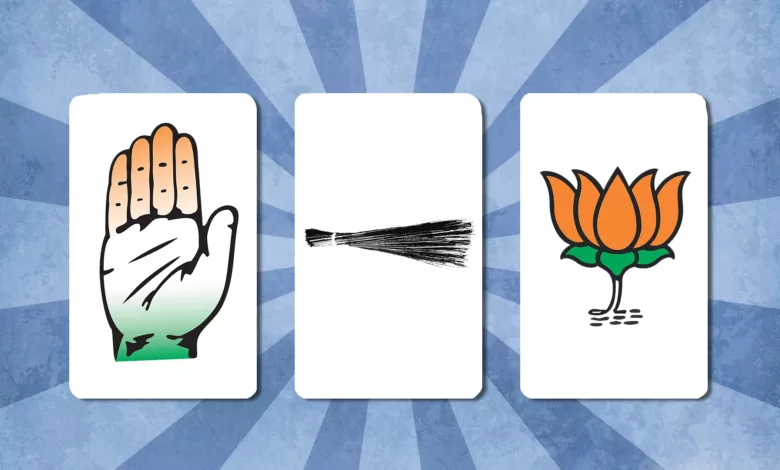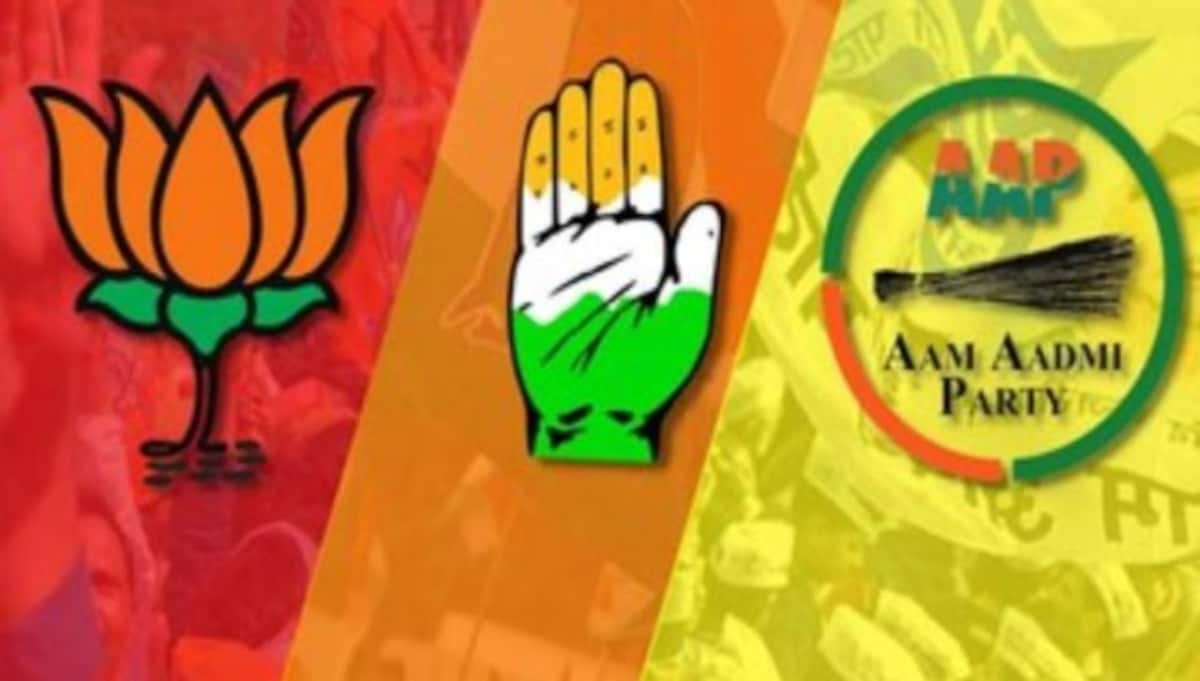The Tit-For-Tat Poster Gimmick; Is This A Sign Of A Mature Democracy? Is This What Indian Politics Has Come To Now?
Indian Political system has now given way to tit-for-tat moves, BJP leaders have put up posters across Delhi demanding the ouster of Chief Minister Arvind Kejriwal. This comes just one day after posters with the slogan "Modi Hatao, Desh Bachao" appeared in various parts of the city. Without taking any sides, this kind of behaviour only serves to undermine India's reputation as a mature democracy where differences can be discussed without resorting to name-calling or personal attacks, or putting up posters! It seems that Indian politics has taken a turn for the worse, more like a contest in school - who will be the next head boy?

The Indian Political landscape just seems to inch higher each day; if you thought that this entire “poster saga” seemed funny and took one back to school days when the head boy contest was the ‘most important’ event in life or put you to splits of laughter or maybe just a lopsided smile, you are not alone!
Mysteriously sometime yesterday, posters of “Modi Hatao, Desh Bachao” appeared in various parts of Delhi, and true to be in form and not to be outdone appeared posters of “Kejriwal Hatao, Dilli Bachao”.
But apparently, these seemingly funny actions on the part of both parties have taken a severe and unpardonable form. On Wednesday, Delhi Police arrested several persons for allegedly putting up posters against PM Modi.
This is not the first time we are seeing such gimmicks being used by political parties to gain attention or score points over their opponents. In fact, this kind of tit-for-tat poster gimmick has become quite common in India’s political landscape nowadays. And it is not just limited to putting up posters; it also has entered the parliament where crass words are used, arguments have turned personal and ugly, and the entire Indian political system has turned on its head!

However, coming back to the poster controversy, once the anti-Modi posters were noticed, quick to retort and on the heels appeared the anti-Kejriwal posters, but this was not the end of it, sadly.
The entire episode escalated, quickly at that, and surely and smoothly gave way to police action against the said perpetrators – AAP workers – Delhi Police said that it had arrested six people and registered 49 FIRs in connection with these posters. Earlier, police said that 100 FIRs were registered but later clarified that only 49 cases have been filed.
As expected, Delhi Chief Minister Arvind Kejriwal lashed out at the Centre over the action taken by Delhi Police against Aam Aadmi Party supporters, who allegedly put up objectionable posters on Prime Minister Narendra Modi across the national capital.
In a press briefing on Wednesday, weighing on the poster row, the Delhi CM said, “Why is PM Modi so scared? Why is he so insecure? This is a normal poster; anyone can put up such posters in a democracy.”
Further on the point of posters reading “Kejriwal Hatao, Dilli Bachao”, Kejriwal said he had no objection to such posters and that those who wanted him out should go ahead and do it. He also added that he was not afraid of anyone or anything and would continue to work for the people of Delhi regardless of any opposition from political parties or individuals.

Questions
Firstly, without getting into the issue of whether this was/is the right thing to do and not getting into party politics either – a question does come into mind – can we express our opinion of a particular leader or any political person at that in the negative through any means of communication channels (social media) available to us today without having the ‘fear’ of being labelled a ‘traitor’ or (horrible thought) being ‘publically lynched’, caught by police, put in jail or a court case thrown?!
It does send a wave of fear up one’s spine if one were to actually answer that question in all honesty and truth – we are mere ordinary folks with no political power, money or influence!
However, acknowledging the above, we come to the second question – The poster row has sparked an intense debate in mind about whether this is what Indian politics has come to now – tit-for-tat gimmicks and mudslinging?
It certainly isn’t a good look for our country, which prides itself on its democratic values and principles of peaceful coexistence.
This kind of petty politicking is nothing new in India, but it does seem like things are getting more heated than ever before. It’s sad to see how low our politicians have stooped in order to gain an edge over their opponents – resorting to childish tactics instead of focusing on real issues facing our country today.
On the one hand, it can be argued that such tactics are necessary in order to draw attention to issues that need addressing or that this is the Indian political parties we are talking about, but such tactics can also be seen as a sign of desperation, and perhaps we need to rise above such stupid gimmicks in the ‘new India that is today etching its place in the global arena.
It is sad to see how low our politicians have stooped just to get some cheap publicity or make a point about their rivals without actually engaging in any meaningful debate on issues facing our country today.
The use of such tactics also shows how desperate some politicians are getting when it comes to gaining an edge over their opponents during election season or otherwise trying to stay relevant in public discourse even after losing power at the Centre or state-level governments, respectively.
Whatever your opinion may be on this matter, there is no denying that these kinds of stunts do nothing but further polarise society and create animosity between different political factions.
This kind of behaviour should be strongly condemned by all right-thinking citizens who want better governance from our elected representatives instead of petty politicking, which does nothing more than create further divisions among us as Indians.
What we should all strive towards instead is constructive dialogue and meaningful engagement between opposing sides so as to find common ground and work together towards solutions rather than resorting to petty squabbles like putting up offensive posters in public places.
This kind of behaviour only serves to undermine India’s reputation as a mature democracy where differences can be discussed without resorting to name-calling or personal attacks, or putting up posters!

What we need now is for our country and the citizens to rise above petty politics and focus on issues that need solutions and what is important to us – inflation, education, healthcare, depleting forests, water issues, pollution, population, infrastructure, economy and so much more instead of engaging in mudslinging campaigns against each other.
We must remember that at the end of the day, we are all Indians first and foremost – let us not forget this fact while debating important matters concerning our nation’s future!
Conclusion: We hope that going forward, our leaders and our nation’s representatives will focus more on constructive debates rather than resorting to these kinds of gimmicks, which do nothing more than distract us from real issues facing our nation today.
Let us hope then that politicians will take heed from this episode and focus more on finding ways forward through collaboration rather than confrontation if we are ever going to make progress in tackling some of India’s most pressing problems today!




